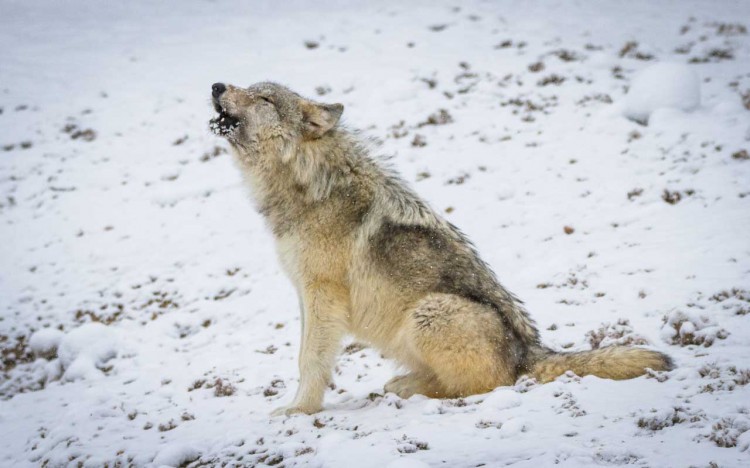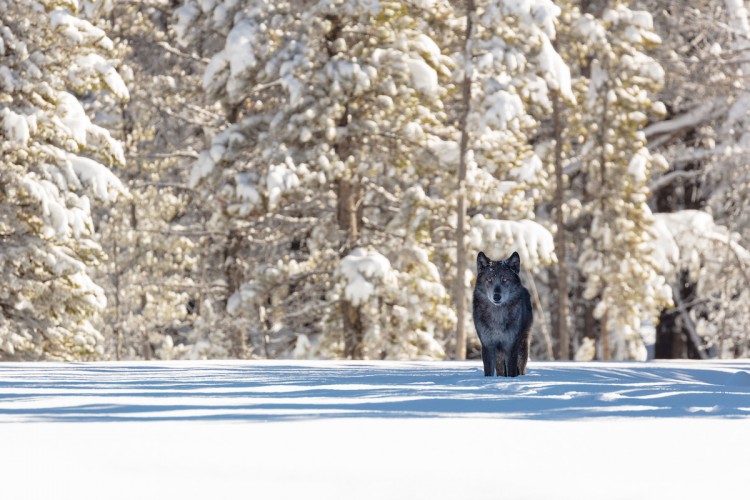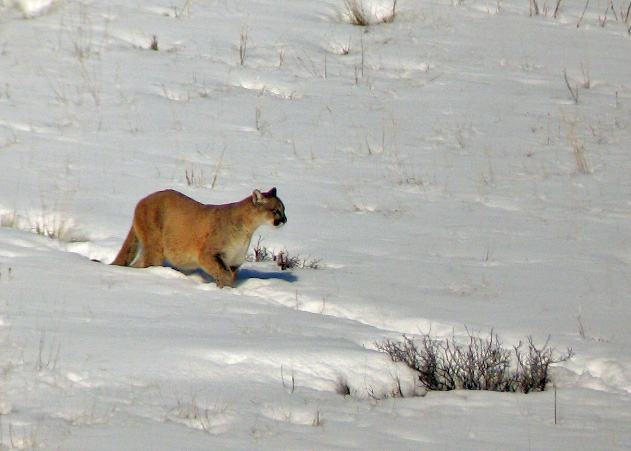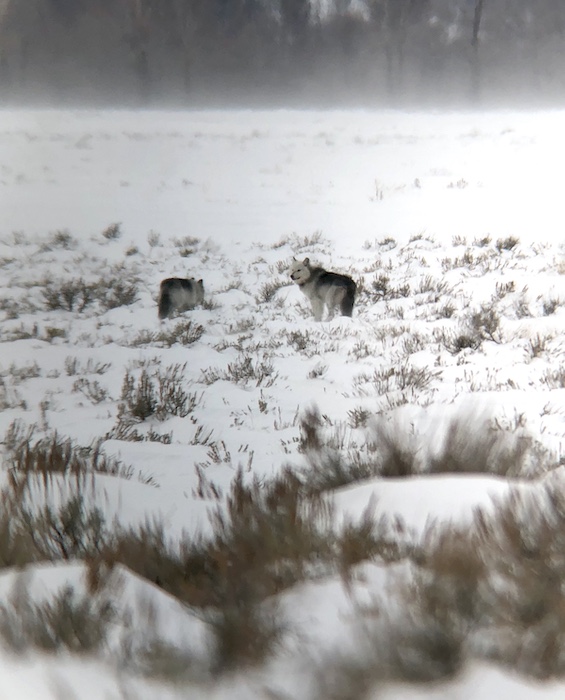Research Revealed: A striking relationship between wolves & parasites

One of the most magical experiences in the Greater Yellowstone Ecosystem is getting to see a gray wolf in the wild. When touring with us, guests’ best chance of seeing a wolf is in the Northern Range of Yellowstone National Park, where packs have established their territories in view of the roads.
There is no animal in the GYE that has been more rigorously studied than the gray wolf. Thanks to nearly thirty years of data–which began being collected when wolves were reintroduced to Yellowstone in 1995–we have an incredible understanding of how these wolves fit into and operate within their ecosystem. This is knowledge we always impart onto our guests, so you can go home with a greater appreciation for this animal.

Photo by Josh Metten.
We are pleased to share that our knowledge has just been expanded! Last month, results from a new study, published in the journal Communications Biology, revealed that a gray wolf infected with the parasite known as Toxoplasma gondii is almost twice as likely to become a pack leader than a non-infected wolf. Let’s dig a little deeper into these results, but bear with us–we’re gonna get pretty science-y up in here!
Toxoplasma gondii infects any warm-blooded animal, but it requires a feline host in order to sexually reproduce. Infection spreads through feline feces, which can contaminate water and food sources, from an infected mother to her newborn, or from eating raw meat containing cysts formed by the parasite. Once a host is exposed, the infection forms cysts in the brain and muscle tissue, leading to a disease known as toxoplasmosis. Most infected individuals do not have symptoms. Serious disease most often affects pregnant females, newborns, and immunosuppressed individuals. Experimental studies have shown that individuals with chronic infections have a greater production of dopamine and testosterone, both of which are tied to increases in aggression and risk-taking behavior. Previous studies have linked a Toxoplasma gondii infection with increased risk-taking in hyenas, rodents, and chimpanzees. Given the presence of cat species in the Greater Yellowstone Ecosystem, would we see the same behavior in infected individuals of Yellowstone’s gray wolf population?
This is the question that Connor Meyer, a graduate student at the University of Montana, and Kira Cassidy, a research associate with the Yellowstone Wolf Project, wanted to answer. Mountain lions are the most abundant feline hosts in Yellowstone National Park, with counts from 2020 estimating their numbers in the Northern Range to be between 30-40 individuals. Data collected from 62 cougars between 1999-2004 and again between 2016-2020 found the parasite in 51% of individuals.

A mountain lion in the snow. Photo by ETA General Manager Tenley Thompson.
The Northern Range is also home to most of Yellowstone’s wolf population, so there is significant overlap between the two species, and therefore a high likelihood of Toxoplasma gondii infection in wolves.
Yellowstone’s extensive study of wolves has found Toxoplasma gondii among the park’s wolves over their 26-year presence in the park. So, did these wolves behave differently from non-infected wolves? In order to determine whether infected wolves were behaving more boldly, Meyer and Cassidy identified two wolf behaviors associated with greater risk-taking: (1) dispersing from a pack, and (2) becoming a pack leader, then pored over the nearly three decades’ worth of data.
The results were consistent with those of studies on other species. Meyer and Cassidy found that infected wolves were 11 times more likely to disperse from their pack and were 46 times more likely to become pack leaders than non-infected wolves. Because the parasite may increase testosterone levels, wolves infected with the parasite may behave more aggressively during interactions with other packs. This, combined with possible preferential sexual selection due to their bolder behavior, may make them more likely candidates for leadership roles.
Photo by Josh Metten.
This does not speak to the leadership quality of those wolves, however. Pack leaders have a disproportionate influence on their pack, altering social learning and decision-making. An infected leader’s bolder behavior could trigger other pack members to behave similarly, the effects of which would need further study. Would we see higher death rates among packs led by infected wolves? Would we see a greater prevalence of assertive, risk-taking behavior among all pack members? These are interesting questions that point to the intricate relationships in nature, and how even the smallest of living things–in this case, a parasite–can influence its environment.
If you’d like to read this exciting study in its entirety, head to the journal here.













